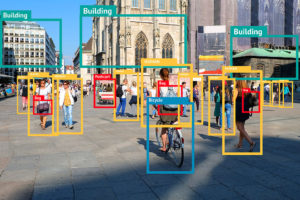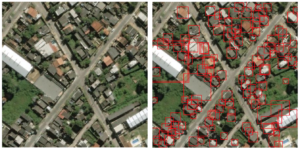
Getting a grasp of Deep Learning.
If you have been on YouTube lately, you’ve likely seen the Udemy commercial suggesting you take courses on Deep Learning. Okay, great! But what is Deep Learning?

Deep Learning is a type of machine learning technique that instructs computers to do what otherwise comes naturally to the human brain; Learn by example.
Through Deep Learning, a computer model learns to perform tasks directly from images, text or sound. Some instances of this can be seen in the technology that powers driverless cars, which enables the vehicle to discern between a person and lamppost or to recognize stops signs and other traffic signals. It can be witnessed in handheld consumer devices that obey simple directions and home convenience systems, like Alexa that perform menial tasks upon command. As such, Deep Learning is getting a lot of attention these days for achieving results that were not possible only a few years ago. Using large sets of labeled data and complex network architectures, Deep Learning models can achieve unparalleled accuracy, often exceeding human-level performance.
What you need to know is that Deep Learning is about a Neural Network. A Neural Network is the gathering of various data sets that interact and depend on each other to produce a desired result. Through this interaction, the multiple data sets achieve a higher accuracy by involving pattern complexity. To interpret and recognize very complex patterns you need neural networks.
Of course, this description, much like deep learning itself is like skipping a stone across the surface of a lake to understand the depth of the water. The writer, futurist and businessman Alvin Toffler said, “The illiterate of the 21st century will not be those who cannot read and write, but those who cannot learn, unlearn and relearn.” It’s important to understand this advancement in technology, especially when people start throwing out terms like, ‘convolutional nets,’ ‘non-linearity,’ and ‘backpropagation.’ What?
To understand more about Deep Learning and Artificial Intelligence, an excellent resource is the scientist and entrepreneur, Andrew NG. NG is considered by many to be one of the most influential minds in the field.
While Deep Learning was theorized in the early 1980’s for various and obvious reasons it has only recently become useful. In fact, of late, Google has invested over $400 million in deep learning and Toyota invested 1 billion in artificial intelligence research. Deep Learning requires large amounts of labeled data. In the example of autonomous vehicles, there is the requirement of millions of images and thousands of hours of video. There is also the necessity for substantial computing power. High performance graphic processing units (GPU’s) of recent have a parallel architecture that is efficient for deep learning. When this is combined with advances in cloud computing, this enables developers to reduce training time for networks from weeks to mere hours.
Other examples of uses are in the fields of Aerospace and Defense, where this learning is used to identify objects from satellites that locate zones that are safe or unsafe for troops. Or Medical Research, where cancer researchers are using deep learning to automatically detect cancer cells. Finally, in the field of Marketing where Deep Learning has been used to identify sets and subsets of target consumers, which can then be used to build digital marketing campaigns tailored to the specific audience.

In the simplest of terms, contemporary computing has advanced to the stage that complex data systems (Neural Networks) and computing abilities (powering Deep Learning) has progressed to an unparalleled point of accuracy. The benefits and availability of the data provided by Deep Learning will and should be a part of any companies future strategy.
From predictive modeling and complicated algorithms to deep learning and artificial intelligence, Likely.AI is a new-age lead generation tool which is changing lead quality expectations by identifying consumers’ likely real estate decisions before their decisions have been made. To learn more contact Likely.AI.


